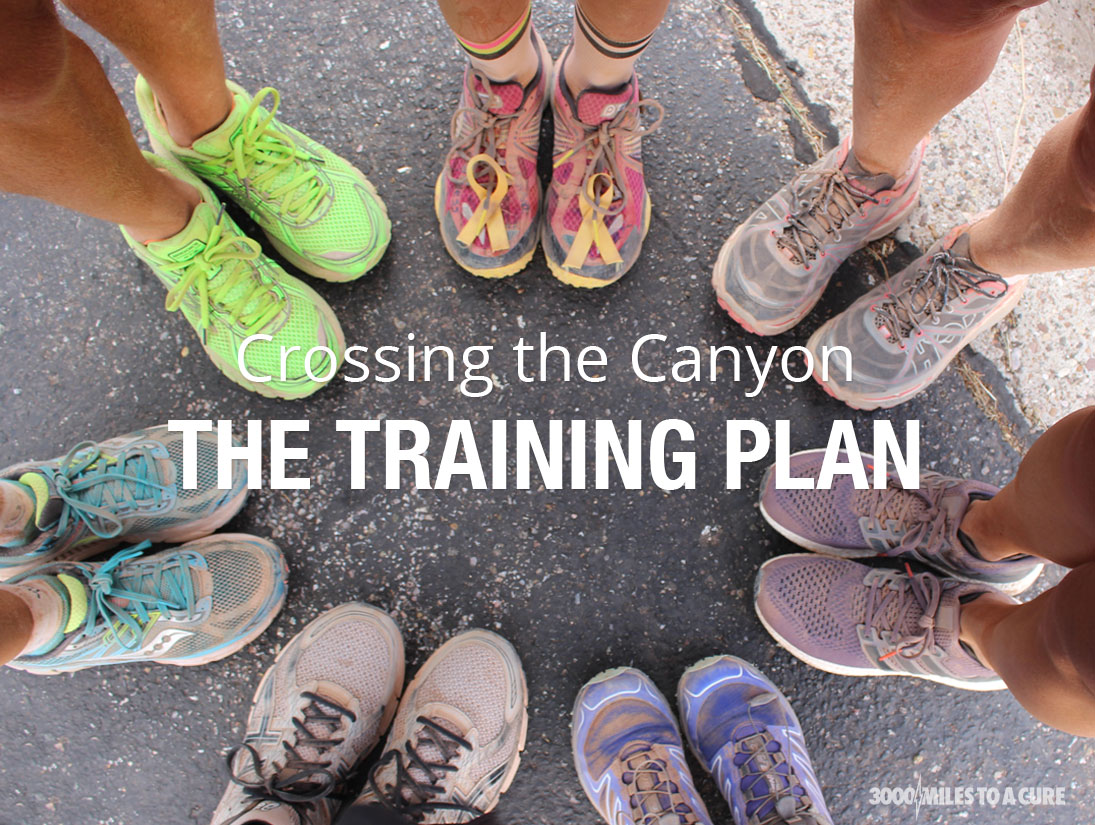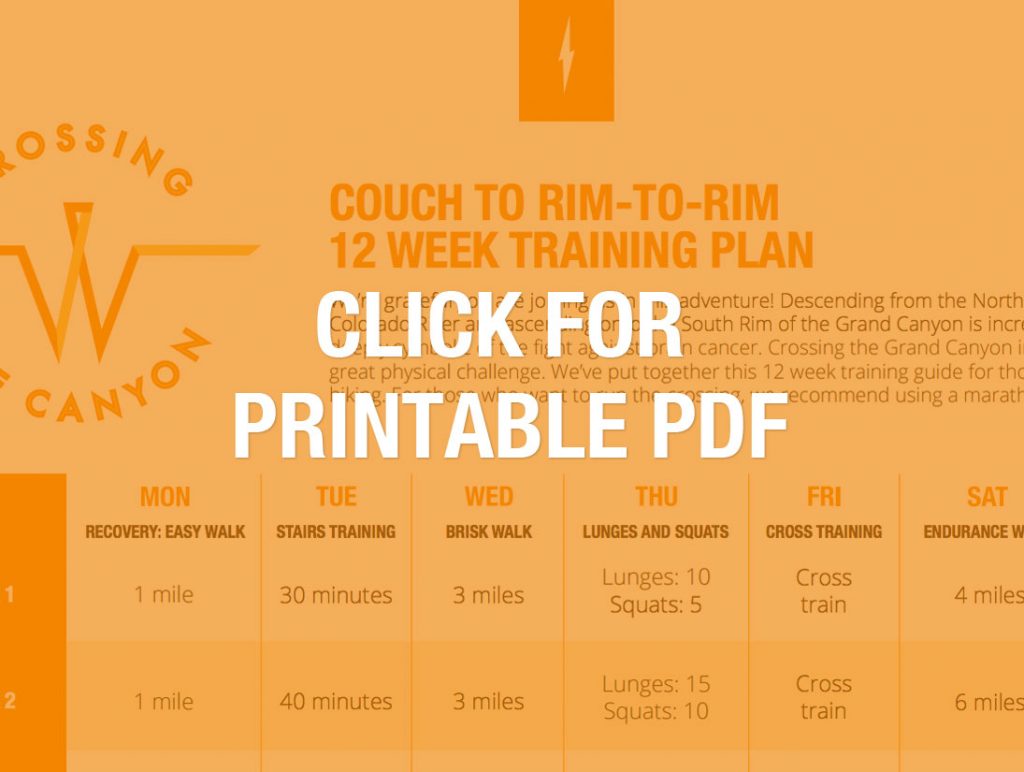This is part of a Crossing the Canyon blog series. In it, we’ll share training tips, motivation and some fundraising suggestions. If you’re planning to hike, check out Maria’s 12 Week Couch to Rim to Rim training plan here. For more information about Crossing the Canyon or to sign up to join the team, head here.
We’re grateful you are joining us in this adventure! Experiencing the descent from the North Rim, crossing the Colorado River and ascending onto the South Rim of the Grand Canyon is incredibly beautiful and deeply symbolic of the fight against brain cancer.
Thank you for your commitment to use this experience to raise funds to fight brain cancer. Last year, when I did it for the first time, I was changed by the experience. I hope as you train for your crossing, and raise funds to fight brain cancer, you experience the pleasure of an increasingly fit body and the knowledge that you are using this experience to improve lives and give hope.
Crossing the Grand Canyon in a day is a great physical challenge. It will be more enjoyable and safe if you are in excellent physical condition. Today and in the upcoming weeks we’ll present training tips, motivational words and fundraising suggestions.. Most of the training tips will be for those of us who plan to hike the event. If you plan to run it, please follow a marathon training plan like this 16 week mountain marathon training plan.
- A couple of disclaimers:
This is a strenuous event. Once down in the canyon, not finishing is not an option. There is no quitting if you are injured. Please come to the event physically prepared. - Before starting this or any exercise program, you should consult your healthcare professional.
12 Week Rim to Rim Hike Training Plan
The training plan consists of walking, stair climbing, squats and lunges, and cross training. Walking is the most important part of the program with increasing endurance walks each week. Be sure to leave enough time on Saturday or Sunday for the long walk of the week. I find getting up very early and beginning my long walks before anyone else is up works well. When I get back, I’ve had a good workout, but I still have some of my Saturday left. Towards the end of the program, the long walk gets up to 22 miles. You might want to plan a couple of weekend trips somewhere new where you can enjoy the longer weekend walks. It’s also helpful to find someone to walk with. When I’m doing my longer walks or runs, I’ll get different people to walk with me for different parts of it. For instance, my husband might do the first few miles, my son the next section and a friend another part. If I’m doing my long walks solo, I will sometimes listen to a audio book or music. If you are doing your endurance walks in very mountainous areas, you can make them a little shorter.
On Monday after two days of weekend walks, an easy one or two mile walk can loosen up your legs. On Wednesday you’ll do a fast walk to improve your aerobic capacity, this should feel hard enough to leave you a little breathless.
Stairs: Doing stairs if you live in a flat area is very helpful for preparing for the ascents and descents of the Grand Canyon. I live in an area with no hills so I spend one day a week walking/jogging the stadium steps at my local high school. Both ups and downs are important.
Lunges and Squats: Lunges and squats, like stairs, prepare your muscles for the rigors of the canyon. Lunges and squats also help protect you from injury.
Squats: Stand with legs shoulder width apart and arms at your sides. Swing your arms forward and up, raising them above your head, palms facing forward. At the same time, bend your knees as if you were sitting in a chair. Hold the Squat briefly, then stand up by pushing through your heels, until you are in a full upright standing position.
Lunges: Stand upright, feet and legs together, hands on hips, elbows out to sides. Step your right leg backward. Bend your left knee until the kneecap is directly above your foot, causing the leg to form a 90-degree angle. Simultaneously lower your right leg until the knee almost rests on the ground, forming another 90-degree angle. Step back to starting position, and repeat, stepping backward with the left leg. Continue to alternate legs
In general, the harder days are followed by easier days. If you find yourself very tired, back-off on the next workout or take a day off. If you have pain in a knee, hip or ankle on one side, see if it gets better after a few minutes warm up. If not, stop and take a few days off.
Cross training: This should be something you enjoy that is completely different. Yoga or swimming would be excellent choices.
read more

